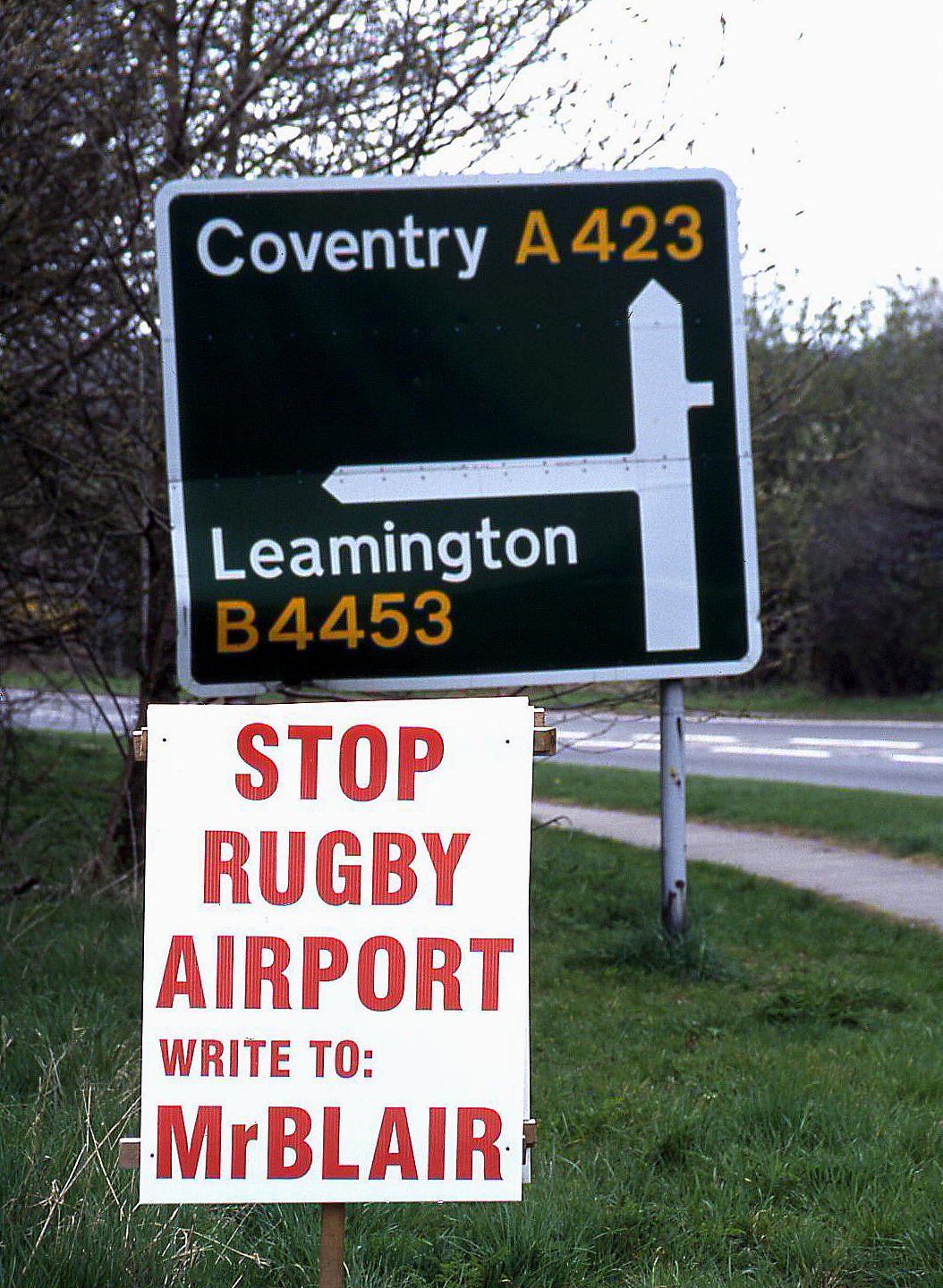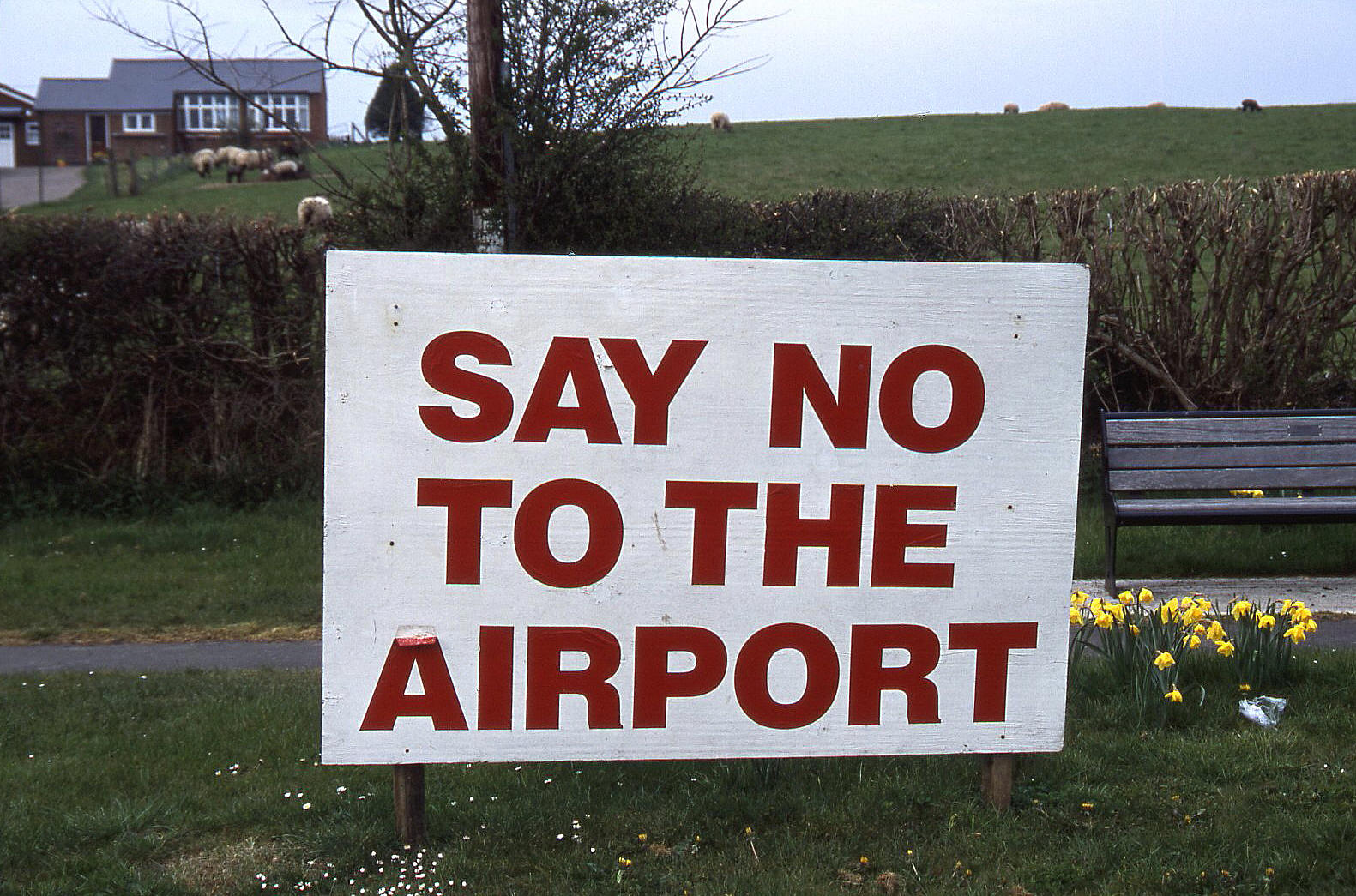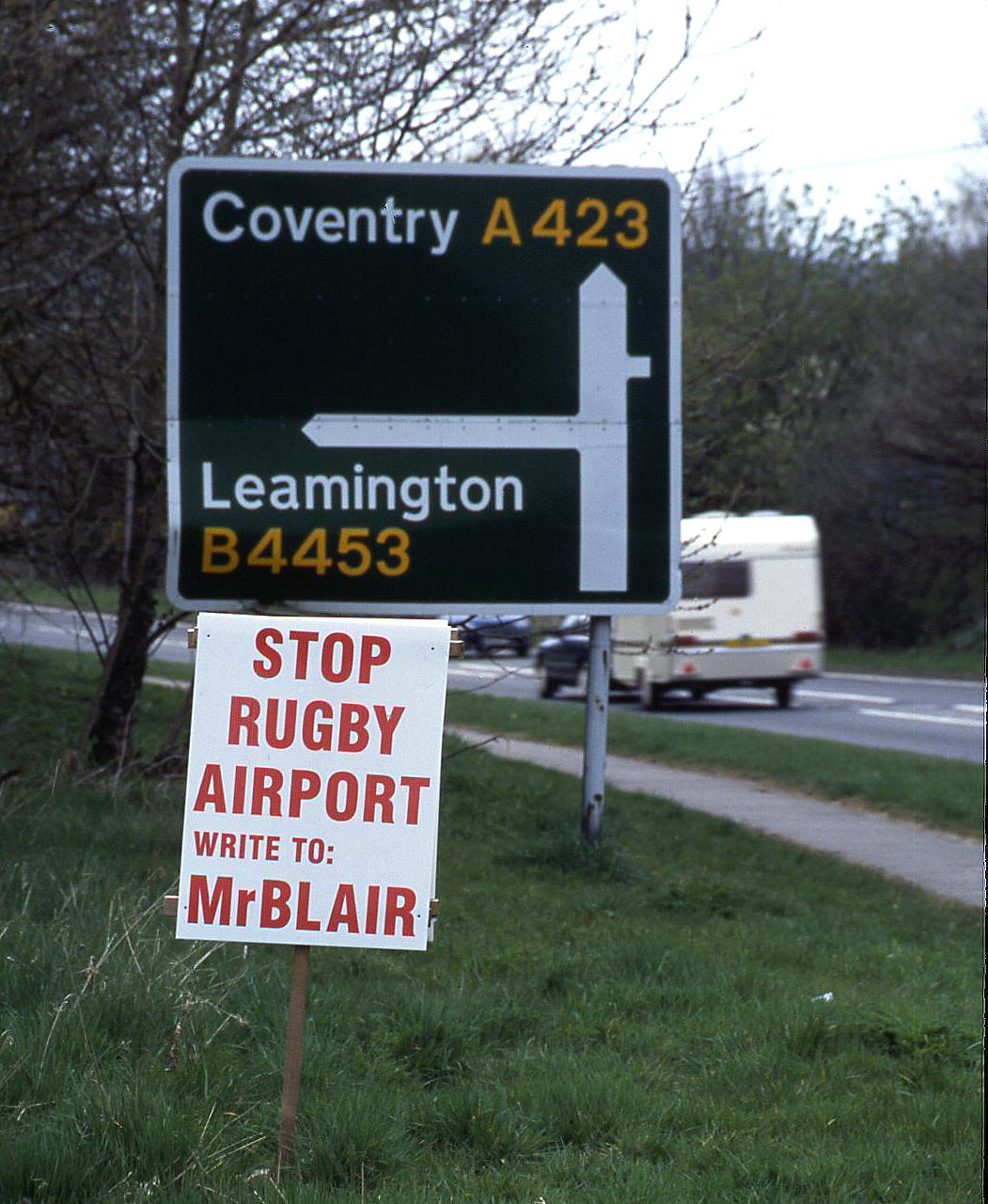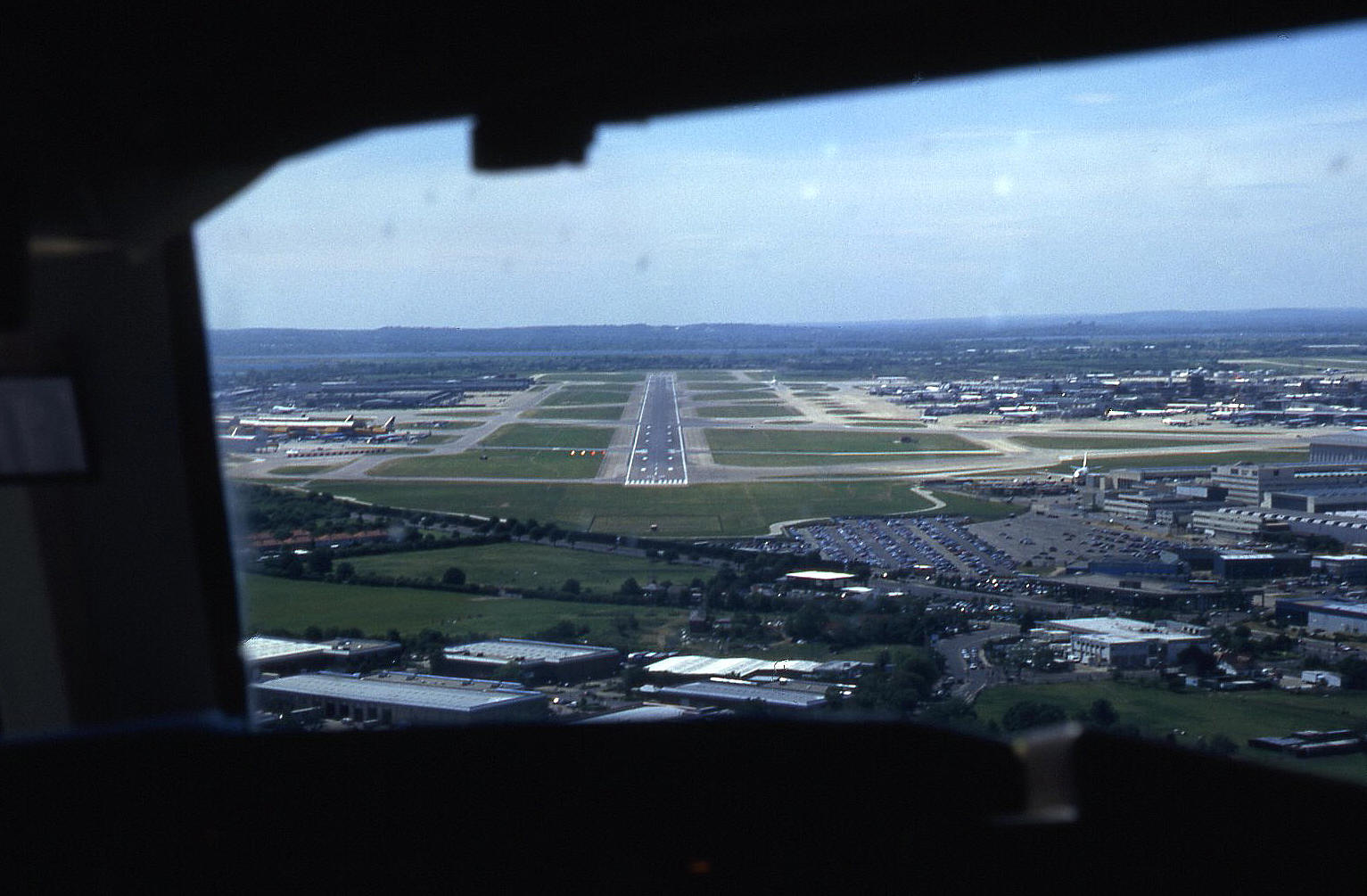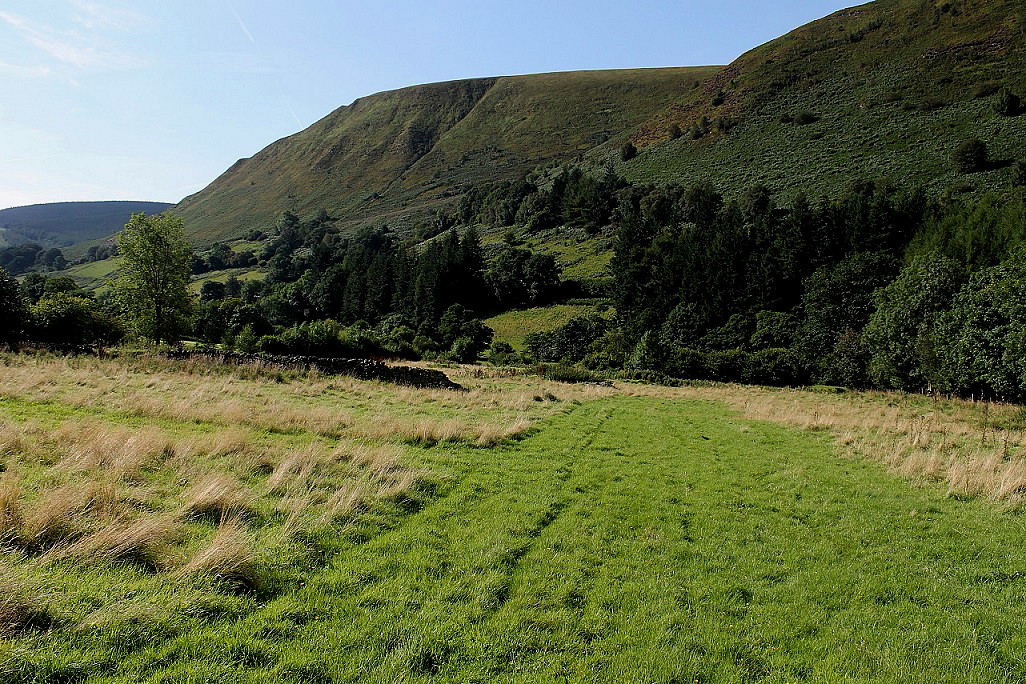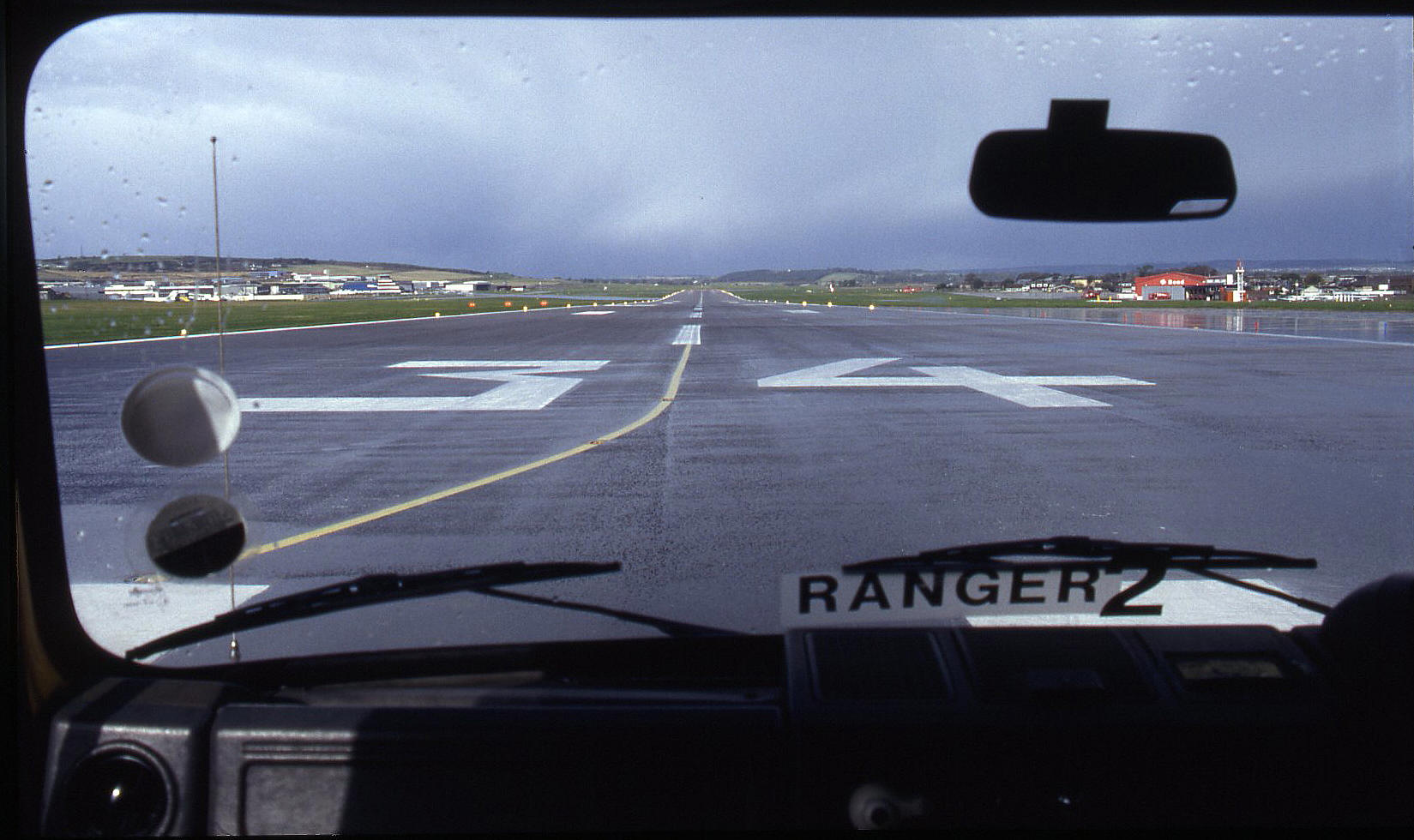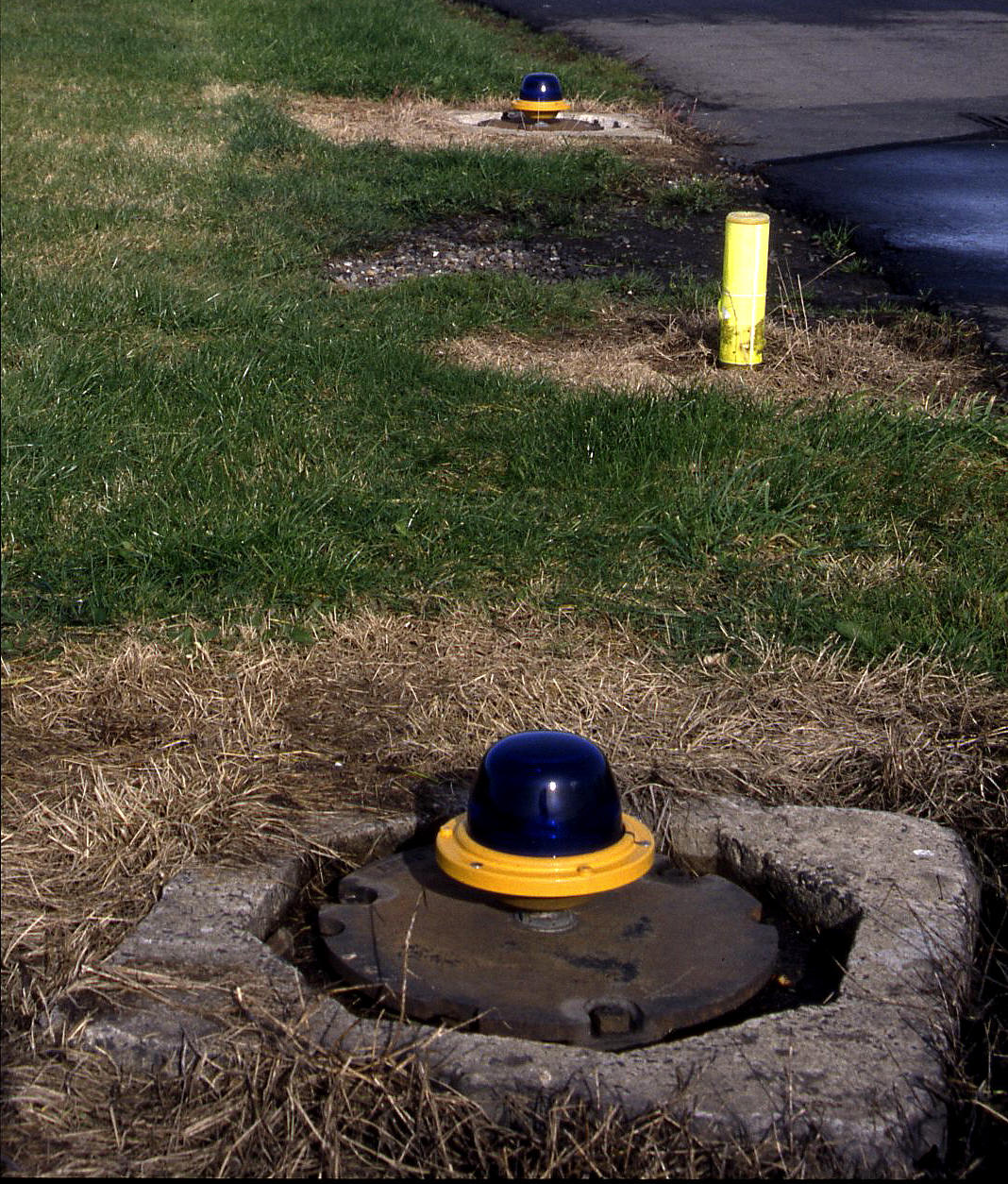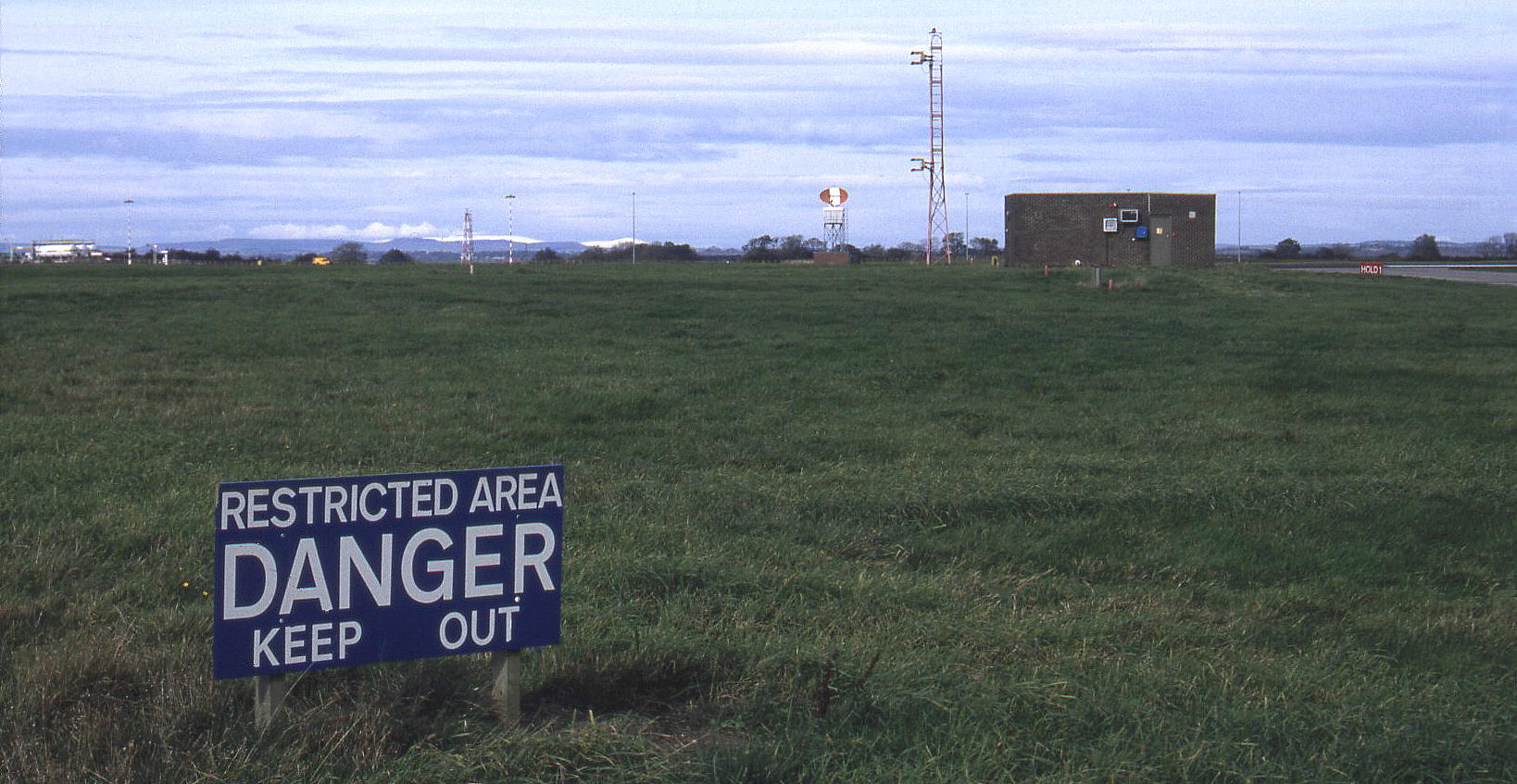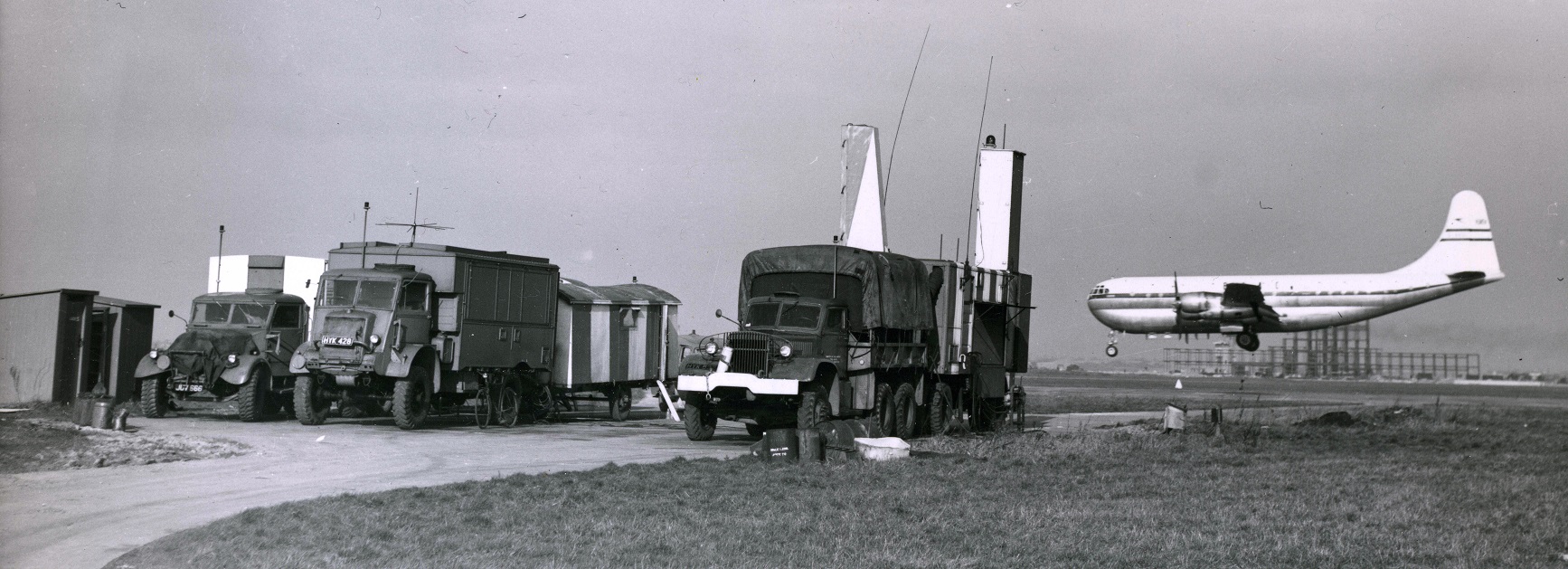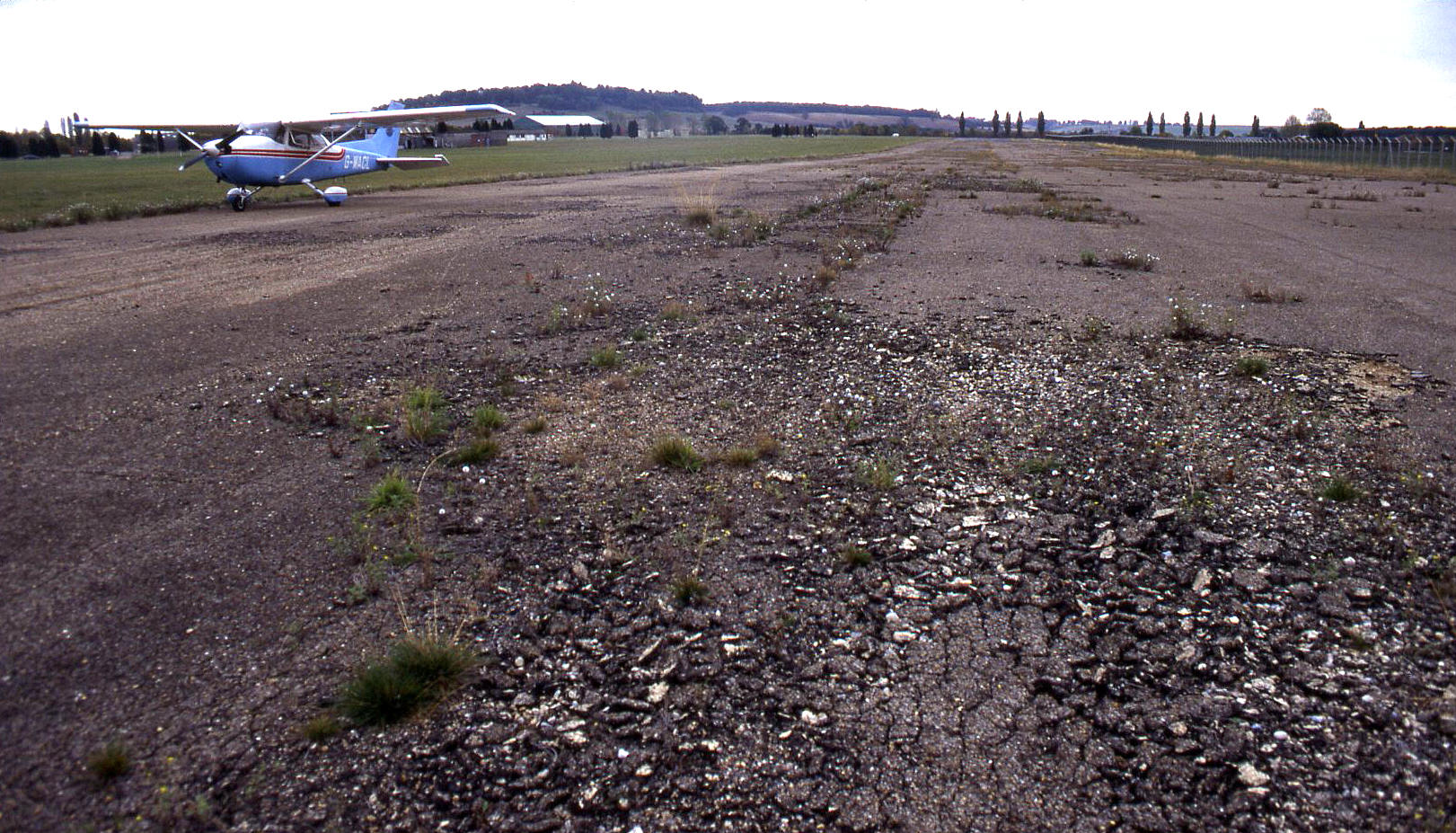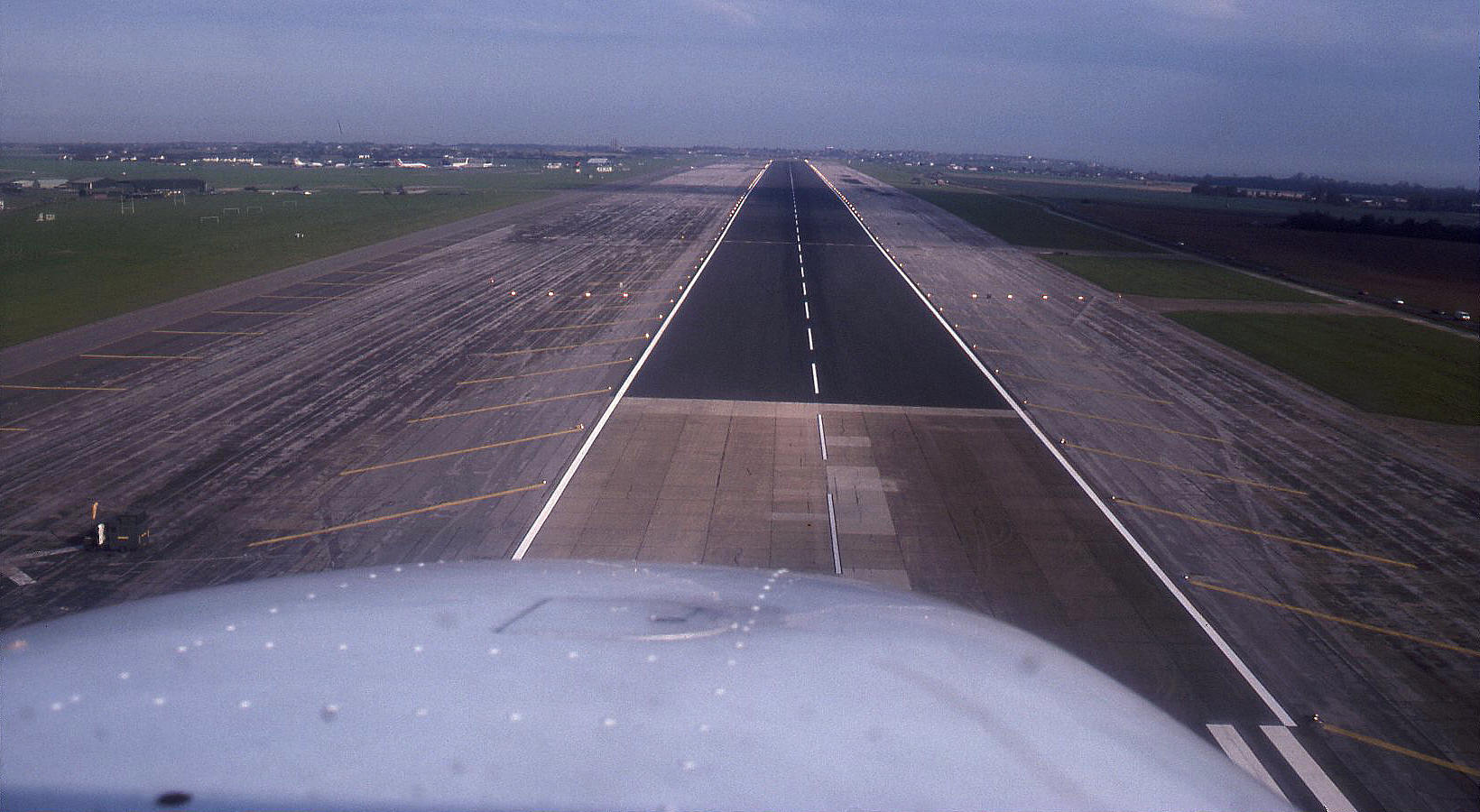Runways
RUNWAYS

Note: All pictures by the author unless specified.
At first glance I suspect many of you might be wondering why on earth I have gone to so much trouble to include runway details; surely only the worst bitten nerds can be interested in these piffling details?
In fact of course the runway(s) are at the very heart of any airfield and of crucial importance for pilots to study. But there’s another reason I need to explain - runways are invariably ‘flexible’ in length and width when viewed over many years, especially grass runways. In fact, even after gaining my Pilots License I had absolutely no idea about what was really involved in understanding the subject. It was only after embarking on the research for this project that I fully began to realise just how complex the subject of runways was. And, the more I learnt, the more interesting it became. And so, if I can kindly request your attention for a while, perhaps you might agree?
THE FIRST RUNWAY IN THE UK?
The first reference I have found, to what we might today call a 'runway', is in 1910 at BEACON HILL (BERKSHIRE). It appears from a contemporary account in the Newbury Weekly News (22nd September 1910) that when Geoffrey de Havilland was experimenting with his second aircraft, the de Havilland II, he could, ".....be witnessed taking place over the specially cut track", which extended for over half a mile.
What is not known, (or it appears?), is who commissioned this 'track'. Was it de Havilland or Moore-Brabazon who initially set up the 'airfield'. Up to that point, and for many years after, aircraft used a suitable area, usually large enough to enable aircraft to take-off and land into wind. In fairness de Havilland would, very sensibly, only fly in still conditions - so the wind factor did not apply.
THE FOR AND AGAINST ARGUMENT
Despite having arguably the richest aviation history of any country in the world, and it being claimed in recent years that air shows have larger amounts of people attending all football matches - the fact remains that a significant proportion of the British population are set against any form of aviation activity anywhere near where they live. Many if not most of them will happily board an airliner to go on holiday, or for business etc, just so long as it doesn't affect them where they live.
But as stated in a Radio Four programme, the British are possibly most famous around the the world for their entrenched hypocrisy. One aspect of this was identified years ago as being the 'NIMBY' factor - "Not In My Back Yard". These people most certainly want the convenience of air travel, and indeed usually demand it - just so long as they are not affected by it. A very odd attitiude to say the least? Perhaps unbelievably but easily provable, is the fact that amongst the worst 'NIMBY' offenders are airline pilots, which is surely rather worrying as it demonstrates a clear detachment from reality.
In many regions of the UK, even the proposal of a new airport, or the expansion of an existing airport, inevitably results in a storm of protest. This ignores of course, the fact that the more regional airports we have - the environmental intrusion becomes substantially reduced on the general population - as it is spread out.
A BIT OF DETAIL
It might also come as a surprise that although, in this ‘Guide’, I have often provided very precise runway dimensions, these may not always reflect the actual ‘operational’ dimensions of the runway as used. The reason for this is because the regulations require a ‘Landing Distance Available’ (LDA) to be calculated as well as a ‘Take-Off Distance Available’ (TODA) and usually these are quite a bit shorter than the actual runway length. Over time the difference between LDA and TODA often gets confused with ‘total length’ as most aviation historians are not pilots. Indeed, in the 1920s and 1930s especially, I have invariably come across accounts stating ‘Minimum Run Available’ for some aerodromes and ‘Maximum Run Available’ for others.
Another aspect is that as aircraft became more advanced they often required longer distances for landing and taking-off. I had imagined that after WW1 most grass aerodromes and indeed airports would be of an ‘All-Over’ and roughly circular layout, enabling aircraft to land and take-off into wind. The fact is that constructing such aerodromes is very expensive indeed and therefore only some military aerodromes were constructed this way. Even for major airports during the inter-war period, only prepared ‘Landing Runs’ were available. Generally speaking not more than two or three favouring the prevailing winds. It does now appear that at many regional airports, especially regarding grass runways laid out prior to WW2, the state of some of these runways would preclude many modern light aircraft using them!
At modern airports for example the ‘ideal’ touchdown point on landing can be anywhere between a quarter to a third of the actual runway length for airliners. Airline crews are not trying to touch-down ‘on the numbers’ in the way a private pilot might attempt to do flying into a short farm strip. Usually safe obstacle clearance, on the approach, is a deciding factor in calculating a LDA and fifty feet over the threshold is a minimum safe altitude to most aerodromes. For example, many runways have a 'displaced threshold' marked out for landing, although pilots might well elect to taxy to the actual runway end when commencing their take-off.
HARD OR STRENGTHENED RUNWAYS
Broadly speaking, the concept of a fixed hard or even ‘strengthened’ grass runway only came into general usage during WW2 when the need arose to cope with ever heavier aircraft, (mainly bombers of course), able to operate all year round. Before WW2 there were usually marked out ‘Landing Runs’ with a 'prepared' surface, especially at international airports like Croydon. For smaller grass aerodromes with unprepared surfaces, if a marked runway became a bit churned up after a spell of wet weather, another could be marked out alongside, and generally speaking this still applies today, if room is available. Quite a few grass aerodromes can be subject to waterlogging and are often closed for quite long periods in the winter. This certainly used to apply at REDHILL in SURREY for example and waterlogging issues pretty much put paid to the original 1930s GATWICK airport a few miles to the south.
In the early days of flying you generally had a large grass landing area (more or less circular), and the direction of take-off and landing was determined by the direction of the wind. Those early aeroplanes, being light and slow and often fitted with engines of minimal power output, had to be taken off and landed into wind. Although, this said, in the very earliest days of powered aviation, most flying usually took place either very early in the morning or during the evening, as and when when calm wind conditions prevailed.
FARM STRIPS
In more recent years, especially after World War II, a farmer or land-owner with an aeroplane might well find a part of a grass field he or she felt suitable, get the tractor out and literally mow a strip across it. Very often these strips are operated under the '28 day rule' which means that if only used for no more than 28 days a year, no planning permission is required. Some farm strips, (whether 28 day or not) , can be as you might well imagine, quite difficult to find sometimes - especially if the runway hasn't been mown for a while.
If you get it wrong you might well find, as you reduce speed after landing, some sort of obstacle like a drainage ditch, (impossible to see from the air perhaps), suddenly appears with expensive consequences. It has happened many times. Which is why it is very important to obtain a briefing before taking off whenever possible. Often, both for private strips and aerodromes, PPR (Prior Permission Required), is in force.
It might be assumed, (as I did), that a grass aerodrome was the cheapest and most practical option in the earlier days of aviation but it is a far more complex subject. Some sites lend themselves naturally to grass field operation, (as do many private airstrips), but even so, as in the ‘good old days’, many of these, (let alone military and civil aerodromes and airports), have required some serious preparation. Take RAF TERNHILL for example when after WW1 it was closed. Within two to three years rabbit burrows had destroyed the airfield.
When it came to reopening the airfield in 1935 it had to be deep-ploughed, regraded and resurfaced before ‘grassing down’. This process in itself created problems and before hard runways were built TERNHILL was regarded as being a ‘wet’ airfield. REDHILL is, as pointed out, another example often closed for weeks if not months in the winter. I well remember landing here after weeks of asking for permission to visit and sinking the aircraft wheels several inches into sodden mire. It took almost full power to taxi to the ‘parking area’ near the control tower. The take-off was ‘interesting’ to say the least and if I hadn’t had a very experienced pilot alongside me I certainly wouldn’t have attempted leaving!
That taught me a thing or two about flying and how to maximise the lift potential of a wing even at very low airspeeds. The idea being to get the aircraft airborne in ground-effect and then, by flying very low to the ground, build up the speed to enable a safe climb-out.
A FANTASY
In researching this Guide I’ve had a fantasy idea about what would happen at many aerodromes and airports if a time lapse camera mounted on a 5000ft high pole was taking a frame a month over a fifty year period? I expect the results would, in many cases appear almost fluid.
RUNWAY DIRECTION MARKINGS
The runway direction figures in this Guide will appear like this for example; 09/27. These figures denote the approximate magnetic direction so 09 is a runway roughly pointing 090 degrees or due east. 27 is the opposite direction or 270 degrees, due west. You might well ask why a three figure and more exact direction number like 093 isn’t used when the runway direction is usually ‘painted’ onto runways. In fact during WW2 the naval airfields did adopt this procedure.
However, the simple reason is that the position of magnetic North moves around quite a bit. In fact over a great many years it moves so much that nearly all runways have to be re-numbered. I’ve given a couple of examples in the listings to illustrate this point. Also, as far as possible I’ve tried to list the latest known direction(s) and dimensions of runways whilst at the same time giving previous details.
WHY METRES?
All runway dimensions in this Guide are in metres, for example 557x23, and this convention is a fairly recent innovation. The idea is to help prevent confusion for pilots who, (as we all know?), are often easily confused. Therefore, for yet another example, although metres mean runway dimensions, feet means altitude or the height of something above sea level, (such as an airfield), and nautical miles (nm) the lateral distance from one point to another. I won’t go into the reasons here but pilots, (and sailors too), use nautical miles, (it’s basically a navigation requirement), as opposed to statute miles used by those who prefer to stay with their feet on the ground.
NOTE: Not all hard runways used by light aircraft have an immaculate smooth surface as this picture shows.
RUNWAY SURFACES
The next subject is the type of surface. Hard generally means asphalt or concrete or perhaps a combination of the two but in almost all cases hard surfaces can be used with a fair amount of confidence especially when dry. However, standing pools of water during or after heavy rain can make for an entertaining experience when aquaplaning occurs. Aircraft are not fitted with tyres similar to road vehicles.
Grass on the other hand deserves a book of it’s own. How long the grass is, and whether it is dry or wet, can have serious consequences of many kinds as it really does affect aircraft performance calculations. I have landed on a long but wet, (and well maintained), grass runway to find it had nearly all the properties of ice! Therefore trying to use the brakes usually makes matters worse. I would normally ‘fly’ the aeroplane as far as possible using normal aerodynamic controls, (often skidding along at various angles), until slowing to almost walking speed to then use differential braking.
A SALUTARY TALE
The kind of material (or ground) below a grass runway makes a great deal of difference and pilots need to know about this especially if they wish to visit ‘farm’ strips. This said all grass aerodromes and strips need to be approached with a fair amount of caution. Some are ‘self-draining’ and highly suitable for year round use whereas others, (I can think of a couple of very popular aerodromes), literally become quagmire after heavy rain.
For example there is one such place in Sussex, (a private airfield rather than just a strip), which I flew into during the summer without any problems. It was a tad on the short side but the runway was firm.
Several years later I had reason to visit it by road at the end of a very wet winter, in my truck to collect an aeroplane. I discovered on arrival that this grass strip ‘aerodrome’ had been closed for a long time by the actions of a very stupid pilot who hadn’t bothered to telephone for a briefing beforehand. And perhaps I should add that apart from being both good practice and good airmanship, gaining PPR (Prior Permission Required) is invariably required at these kinds of locations.
An unusually long period of rain had turned the runway so very soft that, as this pilot landed in his PA-28, it sank in so far the wings rested on the ‘ground’. I have no idea how that episode ended and how that aircraft was eventually retrieved. Needless to say though, his decision to land here closed the airfield for quite a long time.
A VOYAGE OF DISCOVERY
Researching this Guide has been fascinating in all sorts of ways. The more I delved into the subject the richer the finds. I’d expected to list virtually all runways as either hard or grass although I did know of a sand beach runway in western Scotland. What I didn’t expect was what that this wasn’t so unusual. Indeed a once big WW2 aerodrome with ‘hard’ runways was actually sand and I’ve found another on a Scottish island between the Orkney and Shetland Isles listed as gravel. For a normal single-engine light aircraft loose gravel can nigh on destroy the propeller at maximum take-off RPM as it gets sucked in so I assume it was (is?) only used by Islanders, DHC Otters and similar types of high wing twins.
This said, beaches were commonly used in the period before WW2. The beach at St Aubans Bay in Jersey, for example, was the Jersey Airport. I have seen an aerial picture taken in the 1930s with something like a dozen DH Dragons (or similar) all spaced out in a line with their tails facing the promenade.
Another point which I have yet to find an answer to was the extensive use during WW2 of steel matting and planking during WW2 especially. As I understand it these are used to enable ‘all-weather’ operations at grass aerodromes which become soft or boggy during rainy periods. They were heavily perforated allowing the grass to grow through, although some types are best described as being like the sort of matrix used when laying reinforced concrete only of a much larger ‘square’ size.
The obvious question is how long does this process usually take? Landing on wet grass is usually bad enough but did they often land on freshly laid steel matting and planking during WW2? On the other hand, especially in the south of England, many hard runways were impregnated with explosives enabling them to be blown up if the war wasn’t going to plan. I am told that at least one runway was ‘detonated’ just for fun really after the war to see if it would have worked - with a totally positive result. Does anybody now know an example of this happening?
LICENSED RUNWAYS
In many cases, especially regarding WW2 airfields, the original runways still exist and STAVERTON is a good example. However, very often not all the original runways are in use and indeed very often not all the surface areas have been retained and licensed for use. The area licensed for use is marked out usually quite clearly - until landing towards a setting sun on a wet runway for example when it can be a devil to see. At some places landing outside the marked area can have quite severe consequences and serious damage to the aircraft can be caused by potholes etc. Even when taxying care is often needed as broken bitumen or concrete surfaces can cause serious damage, especially to propellers and jet engines sucking up debris when power is applied.
In fairness I’m certain this doesn’t apply at STAVERTON who keep the unlicensed runway areas in good repair. I have landed there several times and can’t recall any problems in this regard. Due to it’s size though, and this applies at many of the bigger regional airports, trying to figure out where the taxiways are can be a bit of a problem at times after landing in a light aircraft for the first time. This problem can even affect commercial crews sitting much higher up when first landing at HEATHROW for example. When Pan Am and TWA went out of business and American and United started flying in, one crew made a mistake when taxying and the ground controller gave the crew a right royal rollocking, to which the laid back skipper replied; "Errr, was I once married to you?" Or so the story goes.
I trust it might surprise some people that the shortest licensed runway in the UK is (or was) 18/36 at Papa Westray on the Orkney Islands - which is only 343 metres long! The shortest licensed runway I have found on the UK mainland is another 18/36 runway at Netherthorpe in Yorkshire (now in Nottinghamshire it seems) and that is (or was) 382 metres long.
RADIO AIDS
With the emergence of more and more radar and radio navigation aids after WW2, when a lot of the basic technology was developed, flying in poor visibility became much less of a problem. This led, for example, to airlines being able to offer greatly enhanced reliabilty in operating their schedules. The VOR (VHF Omni-directional Radio Range) was developed in the USA as early as 1937 and became widely deployed from 1946.
By the year 2000 there were about 3000 VOR 'stations' situated around the world, but, since then the number has substantially decreased as greater reliance on GPS takes over. VORs are not always situated on airports or aerodromes and in fact they are normally situated in remote locations, especially for airliners flying along airways and/or making for their departure and arrival waypoints according to ATC instructions. Newcastle is, I believe, one of the few UK airports to have a VOR situated within the airport boundary.
GCA (Ground Controlled Approach)
We have Mr Ray Grinter, a retired RAF RADAR technician, to thank for pointing out my error in captioning the second picture as an ILS system. GCA preceeded ILS by quite a few years and initial trials at London Airport (Heathrow) as it was then known, began in 1947. Using Radar a controller on the ground issued instructions to the pilots in poor visibilty to enable them to fly the approach until they were visual with the runway.
Indeed, I can remember a similar system using radar, called a PRA (Precision Radar Approach) being available at, for example, MANSTON in Kent in the 1990s. Maybe it still is at various locations?
THE ILS - INSTRUMENT LANDING SYSTEM
It is very important at every airport equipped with an ILS that nothing is allowed to interfere with the signals. A wide area has to be clear of any interference, and indeed, at every airport clearly defined stopping points on taxiways leading to runways are signed, depending on the 'strength' or 'sensitivity' of the ILS being used. These are divided into three catergories, depending on visibility limits. Hence you have 'CAT 1' holding points, 'CAT 2' and 'CAT 3. Aircrews need to pay particular attention, when taxying out to take off, to make certain they stop at the correct holding point.
RUNWAYS IN GENERAL
Ask any pilot about runways and if you scratch deep enough you’ll discover most hate them on balance. You might think pilots love big long runways but I suspect they’d much rather have the old fashioned into wind ‘all-over’ type of airfield, I know I do. Landing in a stiff cross-wind, (especially as wind-shear and turbulence also normally occur as well), puts any pilots skills to the test and sometimes exceeds their capabilities. This applies right up the scale even to 747 Jumbo Jet Captains.
When Heathrow was built the two main runways used today were about a mile long and have since doubled in length. However, few today remember that the original plan was for six runways with a very clever innovation - an 'inverted A-frame layout' being superimposed. PLUS the original plans show a further three runway 'A-frame' layout situated north of the A.4 Bath Road.
46 METRES (50 YARDS)
During WW2 although the lengths and widths varied, the standard runway width was 46 metres. Many WW2 aerodromes with hard runways are still used by light aircraft and the cost of upkeep for all the runway(s) cannot be justified. Therefore, as a general rule, only part of the original 'longest' and normally 'into wind' runway is ‘officially’ and/or licensed. In some cases the other(s) might be safe enough to use. It’s important for a pilot to know exactly where the present operational segment is and generally these portions are well marked.
I once had the opportunity to fly into a long disused WW2 aerodrome with hard runways only one of which seemed anywhere near suitable for use. Before attempting to fly in I drove up and down in a truck looking for a strip of this runway to use. Eventually, amongst all the pot-holes and weeds, I found a strip about three hundred and fifty to four hundred metres long by about three metres wide. The next problem was to ascertain how I might find this tiny area when approaching to land so a few key ‘landmarks’ had to be found that I could easily relate to when on short finals to land. I mention this purely to illustrate the incredible variety of strips of land which might become a suitable runway even if only used once!
EXTRA WIDE RUNWAYS
There are, or have been, very few runways in the UK which exceed the normal WW2 width of 50 yards (46 metres). A few military bases in the 1950s, (RAF MARHAM for example), had their runway widths extended to 91 metres in order to cope with the arrival of the USAF Convair B.36s. The runway at Filton, (see picture), was made much wider to cope with the Bristol Brabazon. The runway at Manston in KENT, in about the same era, was truly massive and, I think, roughly 200 metres wide. This was because it was a major diversion airfield for airliners with severe problems, especially the undercarriage failing to come down and the aircraft skidding off the intended centre line. This runway was also extended in length to 2752 metres which made it also one the longest in the UK.
However, as far as I am aware, nothing in the UK exceeded the WW2 emergency diversion airfield at WOODBRIDGE (SUFFOLK) with a truly whopping runway, the main section of which was 2743 metres long (comprised of bituen and sand) with 457 metre grass extensions at both ends, giving a total usable length of 3657 metres. The width was 247 metres. Many years later the 09L/27R runway at Heathrow was extended to 3902 metres, but the runway width remained 45 metres.
A picture taken by a friend as the author prepares to 'land long' in a Cessna 172. Landing at MANSTON for a first visit was always a tad challenging in a light aircraft as, when you get much lower, the massive expanse on either side makes it tricky to judge the height at which to cut the power and flare. This did get easier on subsequent visits. One knack I discovered which worked very well was to also look out of the side window when very low and flaring. A 'trick' that also worked well on Lochs in Scotland for example with a 'glassy' surface.
In researching this Guide I discovered an interesting fact. Well, not actually that interesting, but here you have it anyway. During WW2 the RAF, (and USAAF), used hard runways that were nearly always a standard 50 yards, (45 metres), wide. The Royal Navy on the other hand usually specified much narrower runways usually about 30 yards, (27 metres), wide. I assume this was part and parcel of a deliberate culture making Navy fliers used to flying more accurately right from the start, before eventually attempting deck landings on aircraft carriers. Is this true? Or did they have less money allocated towards building their aerodromes? Or is there another reason?
DIFFERENT RUNWAY SURFACES IN THE UK
There is another even more ‘nerdy’ aspect of runway construction I discovered. As already pointed out, during WW2 the technique of laying steel mesh or planking onto grass aerodromes was developed enabling them to be used throughout the year. Most grass aerodromes employed steel matting using the very popular ‘Sommerfield Track’ but this was sometimes combined with steel planking. BRC netting track was not suitable for use by tricycle undercarriage aircraft for some reason. Then I found ‘American metal plank’.
As I went about my research I noticed there seemed to be several other distinct methods of constructing runways used over the years. This is one aspect of airfield/airstrip runway building I have find very interesting as my research progessed. Quite frankly, when starting out on this project I had no idea how diverse the surface materials were. Here’s a list of most of them used in the UK over the years:
Asphalt
Asphalt & wood chippings
Bitumen on compacted sand
Bitumen special
Concrete
Concrete/asphalt
Concrete covered with asphalt
Concrete covered with tar
Concrete covered with bitumen
Concrete covered with tar & sand
Concrete covered with tarmac
Concrete and tarmac (Partial coverage)
Concrete & wood chippings
Concrete, tarmac & wood chippings
Concrete wood & rubber chippings
Concrete partially tarred & wood chippings
Graded hardcore
Grass*
Grass & steel matting. In WW2 the first commonly used product was Sommerfeld Tracking which consisted of stiffened steel wire mesh. Later SMT (Square-Mesh Track) was used and this was 'heavy wire' in three-inch squares.
Grass & steel planking. I think is was the Americans who invented PSP (Pierced Steel Planking) and this system was suitable for use by heavier aircraft.
Crushed hardcore
Grass*
Grass and concrete
Gravel
Graded hardcore
Hardcore & concrete
Hardcore & tarmac
Hardcore, tarmac & wood chippings
PBS (Prefabricated Hessian) This was also I think an American invention consisting of strips of asphalt-impregnated jute, suitable for use by fighters and possibly transport types as heavy as the Douglas C-47. It was very important after the D-Day landings for have means of quickly establishing ALGs (Advanced Landing Grounds) behind the 'Front Line' as the invasion moved forward. The only mention of a PBS runway existing in the UK was at KINGSTON BAGPUIZE in BERKSHIRE.
Rolled mortar
Sand (Including natural hard foreshore sand)
Sand bitumen mix
Screeded finish
Tarmac
Tarmac & asphalt
Tarmac & rubber chippings
Tarmac & sealed coat
Tarmac & wood chippings
*As mentioned grass runways are a complete subject in themselves. These vary according to the soil and/or drainage facilities and range from a mowed strip on a farm field, or a lawn at a country house to a fully prepared and properly drained aerodrome which I suspect are almost as expensive to construct as aerodromes with hard runways.
Why on earth did they have to use so many different runway surfaces, especially of the ‘hard’ variety? I imagine this was due to wartime constraints depending on the materials available locally but were there other operational reasons for this diversity? Incidentally, the reason for using ‘green’ wood chippings on many WW2 runways was to help camouflage them but this did apparently make them very slippery when wet! Whilst on the subject I was astonished to discover whilst researching this Guide that in the 1930s Fort Lamy, (later named N’Djamena), in Chad, had a thousand foot runway constructed of red bricks! Just how and/or why this came about now seems lost in the depths of time but it does go to show I still have a lot to learn about what constitutes a runway! In the very early days of aviation many aircraft were launched from a set of rails of course.
It appears that prior to WW2 RAF aerodromes generally had four grass runways, one 1189 x 366 metres and three 914 x 183 metres, the ‘huge’ width enabling line abreast take-offs. Bomber stations however generally had just three grass runways, all measuring 914 x 183 or thereabouts. When WW2 commenced there were only nine airfields in the whole of the UK with hard runways and I believe they were all military airfields.
In 1940 the runways at Bomber Stations were extended to one at 1280 metes and two at 1006 metres and later still the main runway was extended to 1463 metres. By mid 1941 the ‘ideal’ bomber station had one main runway of 1829 metres with the other two being 1280 metres long. This was known as the Standard Operational specification for a Class A aerodrome. Perimeter and access tracks were a standard 50 ft wide (15.23m) and dispersed hard-standings 38m. These were generally circular and later the ‘frying pan’ was introduced. Later still the ‘spectacle’ or ‘loop’ type of dispersal area. Today, over sixty years later, it is sometimes only the partial remains of ‘peri’ tracks and dispersals that exist to testify in concrete form, (excuse the pun), that an aerodrome ever existed.















